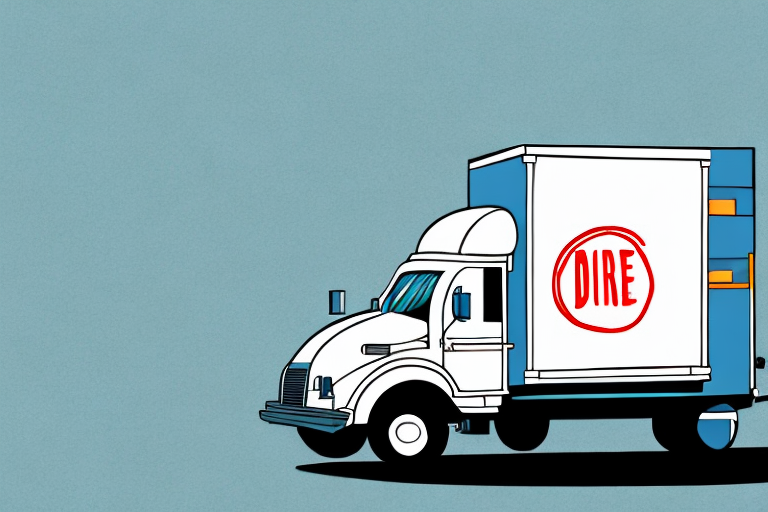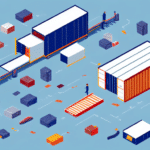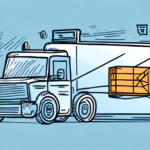The Evolution of Door-to-Door Delivery
Door-to-door delivery has been a fundamental component of logistics and transportation since the 19th century. Initially, this service was predominantly offered in rural areas to deliver essential goods like milk and newspapers directly to customers' homes. As urban populations grew in the 20th century, the demand for efficient delivery systems surged, leading to the widespread adoption of door-to-door services by major postal and courier companies. Today, with the rise of e-commerce, door-to-door delivery has become indispensable for both consumers and businesses alike.
According to the Statista report, global e-commerce sales reached approximately $5.7 trillion in 2022, highlighting the critical role of door-to-door delivery in the modern economy. Furthermore, advancements in technology and logistics have continuously enhanced the efficiency and reliability of these delivery services.
How Door-to-Door Delivery Works
The door-to-door delivery process involves several coordinated steps to ensure packages reach their destinations efficiently and securely:
- Package Preparation: The sender packs the items and prepares them for shipment, ensuring they are securely packaged to prevent damage during transit.
- Scheduling Pickup: The sender schedules a pickup time with the carrier, providing necessary details about the shipment.
- Transportation to Sorting Facilities: The carrier collects the package and transports it to regional sorting centers where it is organized based on its destination.
- Routing and Delivery Scheduling: The package is routed to the appropriate delivery center, and a delivery schedule is established based on the recipient's location and preferences.
- Final Delivery: The carrier delivers the package directly to the recipient's doorstep, often requiring a signature to confirm receipt.
Modern door-to-door services may also include additional features such as real-time tracking, delivery notifications, and flexible delivery windows to enhance the customer experience.
The Benefits of Door-to-Door Delivery
For Online Retailers
- Enhanced Customer Satisfaction: Reliable delivery services boost customer trust and encourage repeat business.
- Reduced Cart Abandonment: Clear delivery options can decrease the likelihood of customers abandoning their shopping carts.
- Efficient Inventory Management: Real-time tracking allows retailers to monitor inventory levels and manage stock more effectively.
- Cost Savings: Eliminating the need for physical storefronts can significantly reduce overhead costs.
For Consumers
- Convenience: Receiving packages at home eliminates the need to visit physical stores or pickup locations.
- Time-Saving: Door-to-door delivery streamlines the shopping process, saving consumers valuable time.
- Flexibility: Options like same-day or weekend deliveries cater to diverse consumer schedules.
These benefits contribute to the growing preference for door-to-door delivery among both businesses and consumers, fostering a more dynamic and responsive marketplace.
Challenges and Limitations
Despite its advantages, door-to-door delivery faces several challenges:
- Geographical Barriers: Delivering to remote or underserved areas can be logistically complex and costly.
- Security Risks: Packages are vulnerable to theft or damage, necessitating robust security measures.
- Operational Delays: Factors such as weather, traffic congestion, and logistical errors can lead to delivery delays.
- Higher Costs: Compared to bulk shipping or centralized pickup points, door-to-door delivery often incurs higher costs.
Additionally, the size and fragility of items can limit the feasibility of certain deliveries, requiring specialized handling or packaging solutions.
Future Trends and Technologies
The door-to-door delivery landscape is continually evolving, driven by technological innovations and shifting consumer expectations. Key emerging trends include:
- Autonomous Delivery Vehicles: The use of drones and self-driving vehicles aims to expedite last-mile deliveries and reduce human labor costs.
- Green Logistics: Adoption of electric and hybrid vehicles is increasing to minimize the carbon footprint of delivery operations.
- Artificial Intelligence and Machine Learning: These technologies optimize delivery routes, enhance package tracking, and improve overall operational efficiency.
- Smart Lockers: Secure, automated lockers offer convenient pickup points, reducing the need for multiple delivery attempts.
According to a McKinsey report, integrating these technologies can significantly enhance delivery speed and reliability while addressing environmental concerns.
Choosing the Right Carrier for Your Door-to-Door Deliveries
Selecting an appropriate carrier is crucial for the success of door-to-door delivery operations. Consider the following factors when making your choice:
- Service Offerings: Evaluate the range of services, including express delivery, tracking, and insurance options.
- Reliability and Reputation: Research carrier reliability through customer reviews and industry ratings.
- Cost Efficiency: Compare pricing structures to ensure they align with your budget and delivery frequency.
- Coverage Area: Ensure the carrier can effectively deliver to all desired locations, both domestic and international.
- Environmental Practices: Consider carriers committed to sustainable practices if environmental impact is a priority for your business.
Top carriers such as FedEx, UPS, and DHL offer comprehensive services that cater to diverse delivery needs, making them reliable choices for many businesses.
The Environmental Impact of Door-to-Door Delivery
Door-to-door delivery contributes to environmental challenges, primarily through vehicle emissions and packaging waste. To mitigate these impacts, the industry is adopting several sustainable practices:
- Electric Vehicles: Transitioning to electric and hybrid delivery vehicles reduces greenhouse gas emissions.
- Packaging Innovations: Utilizing recyclable and biodegradable materials minimizes waste and environmental footprint.
- Route Optimization: Advanced software algorithms optimize delivery routes, decreasing fuel consumption and emissions.
- Carbon Offsetting: Companies are investing in carbon offset projects to neutralize their environmental impact.
According to the Environmental Research Letters, implementing these strategies can significantly reduce the carbon footprint of door-to-door delivery services, aligning them with global sustainability goals.
The Impact of COVID-19 on Door-to-Door Deliveries
The COVID-19 pandemic dramatically accelerated the adoption of door-to-door delivery services. With lockdowns and social distancing measures in place, consumers increasingly turned to online shopping for essential and non-essential goods. This surge in demand led to rapid scaling and innovation within the delivery sector:
- Increased Demand: E-commerce sales saw unprecedented growth, with a U.S. Census Bureau report indicating a significant rise in online sales during the pandemic.
- Operational Adjustments: Delivery companies enhanced their capacity by hiring additional staff and expanding their logistics networks.
- Health and Safety Protocols: Implementation of contactless delivery options to ensure the safety of both delivery personnel and customers.
- Technological Advancements: Accelerated adoption of automation and AI to manage increased shipment volumes efficiently.
These changes not only addressed immediate pandemic-related challenges but also set new standards for the future of door-to-door delivery, emphasizing the importance of flexibility and resilience in the face of global disruptions.
Conclusion
Door-to-door delivery remains a critical aspect of the modern logistics landscape, offering unparalleled convenience and efficiency for both consumers and businesses. While it presents certain challenges, ongoing advancements in technology and sustainable practices are poised to address these issues, ensuring the continued growth and evolution of this delivery method. Understanding the intricacies of door-to-door delivery—from its historical roots to future innovations—enables stakeholders to optimize their logistics strategies effectively.
As the industry adapts to changing consumer behaviors and environmental imperatives, door-to-door delivery will continue to play a pivotal role in shaping the future of commerce and transportation.




















